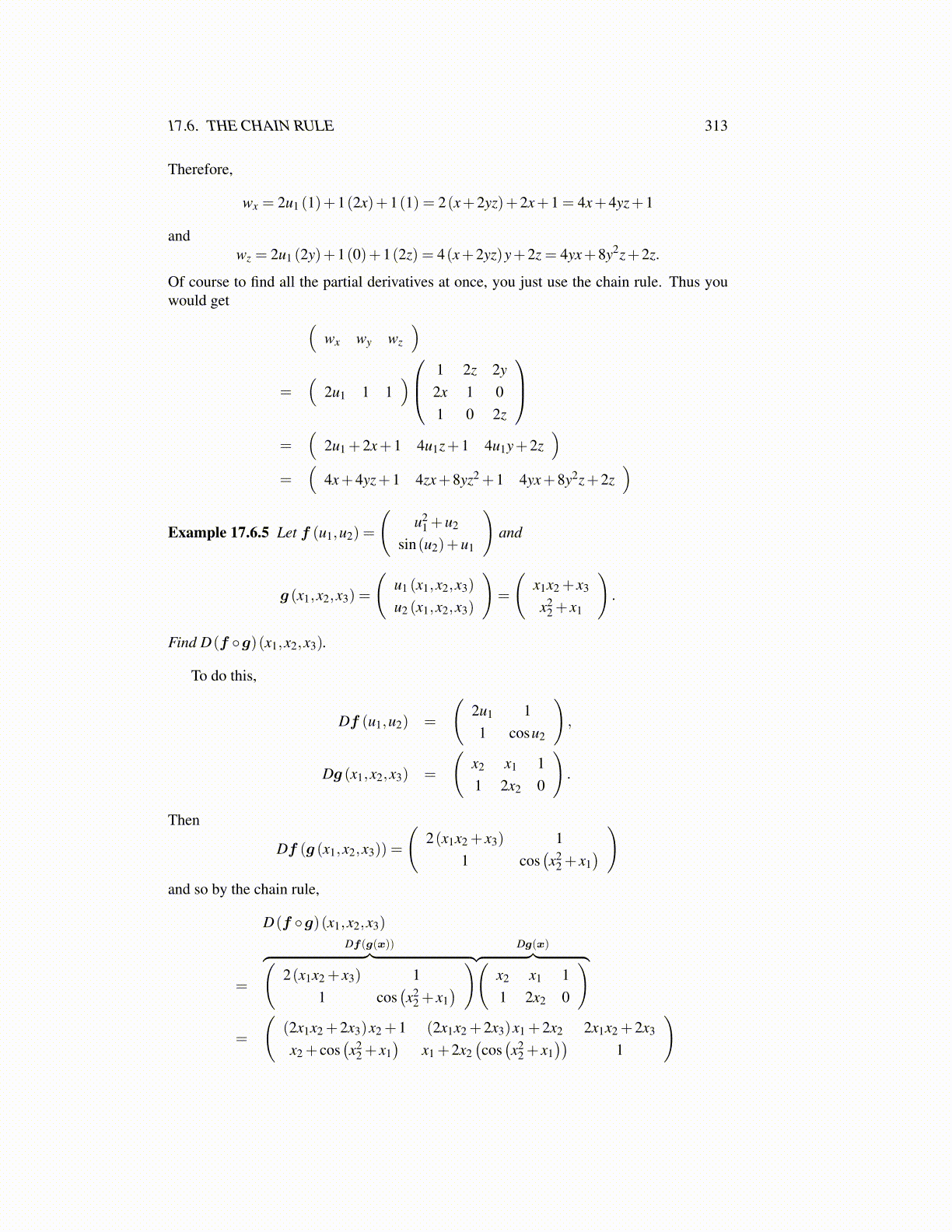
17.6. THE CHAIN RULE 313
Therefore,
wx = 2u1 (1)+1(2x)+1(1) = 2(x+2yz)+2x+1 = 4x+4yz+1
andwz = 2u1 (2y)+1(0)+1(2z) = 4(x+2yz)y+2z = 4yx+8y2z+2z.
Of course to find all the partial derivatives at once, you just use the chain rule. Thus youwould get (
wx wy wz
)=
(2u1 1 1
) 1 2z 2y2x 1 01 0 2z
=
(2u1 +2x+1 4u1z+1 4u1y+2z
)=
(4x+4yz+1 4zx+8yz2 +1 4yx+8y2z+2z
)Example 17.6.5 Let f (u1,u2) =
(u2
1 +u2
sin(u2)+u1
)and
g (x1,x2,x3) =
(u1 (x1,x2,x3)
u2 (x1,x2,x3)
)=
(x1x2 + x3
x22 + x1
).
Find D(f ◦g)(x1,x2,x3).
To do this,
Df (u1,u2) =
(2u1 11 cosu2
),
Dg (x1,x2,x3) =
(x2 x1 11 2x2 0
).
Then
Df (g (x1,x2,x3)) =
(2(x1x2 + x3) 1
1 cos(x2
2 + x1) )
and so by the chain rule,
D(f ◦g)(x1,x2,x3)
=
Df(g(x))︷ ︸︸ ︷(2(x1x2 + x3) 1
1 cos(x2
2 + x1) )
Dg(x)︷ ︸︸ ︷(x2 x1 11 2x2 0
)
=
((2x1x2 +2x3)x2 +1 (2x1x2 +2x3)x1 +2x2 2x1x2 +2x3
x2 + cos(x2
2 + x1)
x1 +2x2(cos(x2
2 + x1))
1
)